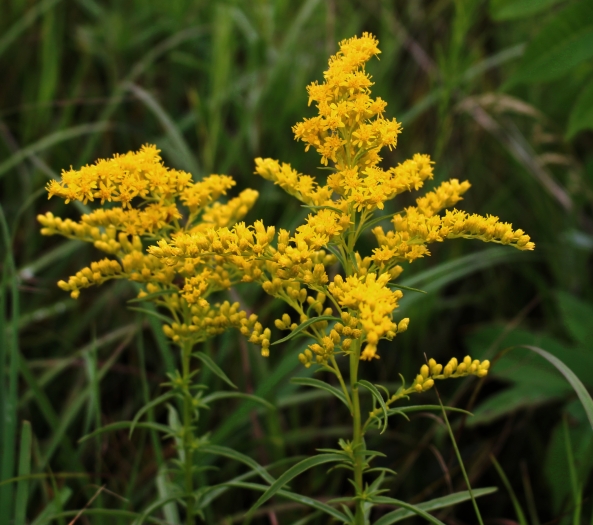Early Goldenrod
(Solidago juncea)
Early Goldenrod (Solidago juncea)
/
/

aarongunnar
CC BY 4.0


















































Estimated Native Range
Summary
Early Goldenrod is valued for its ease of maintenance and its ability to thrive in poor soils, making it a popular choice for naturalized areas, wildflower meadows, and restoration projects. It is also used in border plantings for its bright yellow flowers, which provide a striking contrast to other perennials. This plant prefers full sun but can tolerate light shade and is drought-resistant once established. While generally pest-free, it can occasionally suffer from rust or mildew in humid conditions. Early Goldenrod is not typically aggressive in the garden setting, but its rhizomes can spread, so it may require some control in smaller spaces. It is not considered invasive outside its native range and is a beneficial addition to biodiversity in gardens.CC BY-SA 4.0
Plant Description
- Plant Type: Herb
- Height: 2-4 feet
- Width: 2-3 feet
- Growth Rate: Moderate
- Flower Color: Yellow
- Flowering Season: Summer
- Leaf Retention: Deciduous
Growth Requirements
- Sun: Full Sun
- Water: Low, Medium
- Drainage: Medium, Fast
Common Uses
Bee Garden, Bird Garden, Butterfly Garden, Deer Resistant, Drought Tolerant, Fragrant, Hummingbird Garden, Low Maintenance, Rabbit Resistant, Showy Flowers, Street Planting
Natural Habitat
Native to dry open woodlands, prairies, and fields across eastern and central North America
Other Names
Common Names: Plume Golden-Rod, Yellow Top, Sharp-Toothed Goldenrod, Smooth Goldenrod, Solidage Élancée, Verge D’Or Jonciforme
Scientific Names: , Solidago juncea, Solidago juncea f. scabrella, Solidago juncea var. neobohemica, Solidago juncea var. scabrella, Solidago arguta var. scabrella, Solidago juncea var. juncea, Solidago juncea var. ramosa, Solidago arguta var. juncea, Solidago ciliaris
GBIF Accepted Name: Solidago juncea Aiton